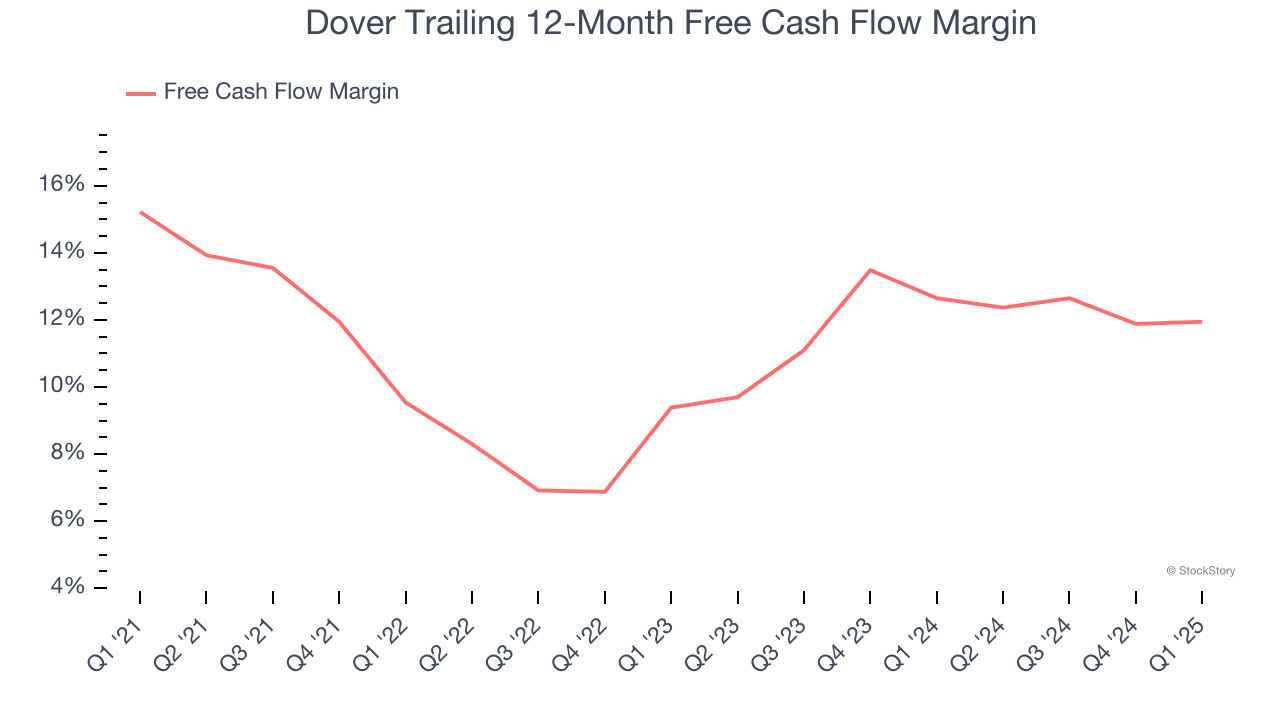
Over the last six months, Dover shares have sunk to $177.40, producing a disappointing 13.3% loss - worse than the S&P 500’s 2.4% drop. This was partly due to its softer quarterly results and might have investors contemplating their next move.
Is there a buying opportunity in Dover, or does it present a risk to your portfolio? Get the full stock story straight from our expert analysts, it’s free.
Why Do We Think Dover Will Underperform?
Even with the cheaper entry price, we don't have much confidence in Dover. Here are three reasons why you should be careful with DOV and a stock we'd rather own.
1. Core Business Falling Behind as Demand Declines
Investors interested in General Industrial Machinery companies should track organic revenue in addition to reported revenue. This metric gives visibility into Dover’s core business because it excludes one-time events such as mergers, acquisitions, and divestitures along with foreign currency fluctuations - non-fundamental factors that can manipulate the income statement.
Over the last two years, Dover’s organic revenue averaged 1.6% year-on-year declines. This performance was underwhelming and implies it may need to improve its products, pricing, or go-to-market strategy. It also suggests Dover might have to lean into acquisitions to grow, which isn’t ideal because M&A can be expensive and risky (integrations often disrupt focus). 
2. EPS Barely Growing
Analyzing the long-term change in earnings per share (EPS) shows whether a company's incremental sales were profitable – for example, revenue could be inflated through excessive spending on advertising and promotions.
Dover’s EPS grew at an unimpressive 7.8% compounded annual growth rate over the last five years. On the bright side, this performance was better than its 1.8% annualized revenue growth and tells us the company became more profitable on a per-share basis as it expanded.

3. Free Cash Flow Margin Dropping
If you’ve followed StockStory for a while, you know we emphasize free cash flow. Why, you ask? We believe that in the end, cash is king, and you can’t use accounting profits to pay the bills.
As you can see below, Dover’s margin dropped by 3.3 percentage points over the last five years. If its declines continue, it could signal increasing investment needs and capital intensity. Dover’s free cash flow margin for the trailing 12 months was 11.9%.

Final Judgment
Dover falls short of our quality standards. Following the recent decline, the stock trades at 18.7× forward P/E (or $177.40 per share). At this valuation, there’s a lot of good news priced in - we think there are better stocks to buy right now. We’d recommend looking at a safe-and-steady industrials business benefiting from an upgrade cycle.
Stocks We Like More Than Dover
Donald Trump’s victory in the 2024 U.S. Presidential Election sent major indices to all-time highs, but stocks have retraced as investors debate the health of the economy and the potential impact of tariffs.
While this leaves much uncertainty around 2025, a few companies are poised for long-term gains regardless of the political or macroeconomic climate, like our Top 5 Strong Momentum Stocks for this week. This is a curated list of our High Quality stocks that have generated a market-beating return of 183% over the last five years (as of March 31st 2025).
Stocks that made our list in 2020 include now familiar names such as Nvidia (+1,545% between March 2020 and March 2025) as well as under-the-radar businesses like the once-micro-cap company Tecnoglass (+1,754% five-year return). Find your next big winner with StockStory today.

